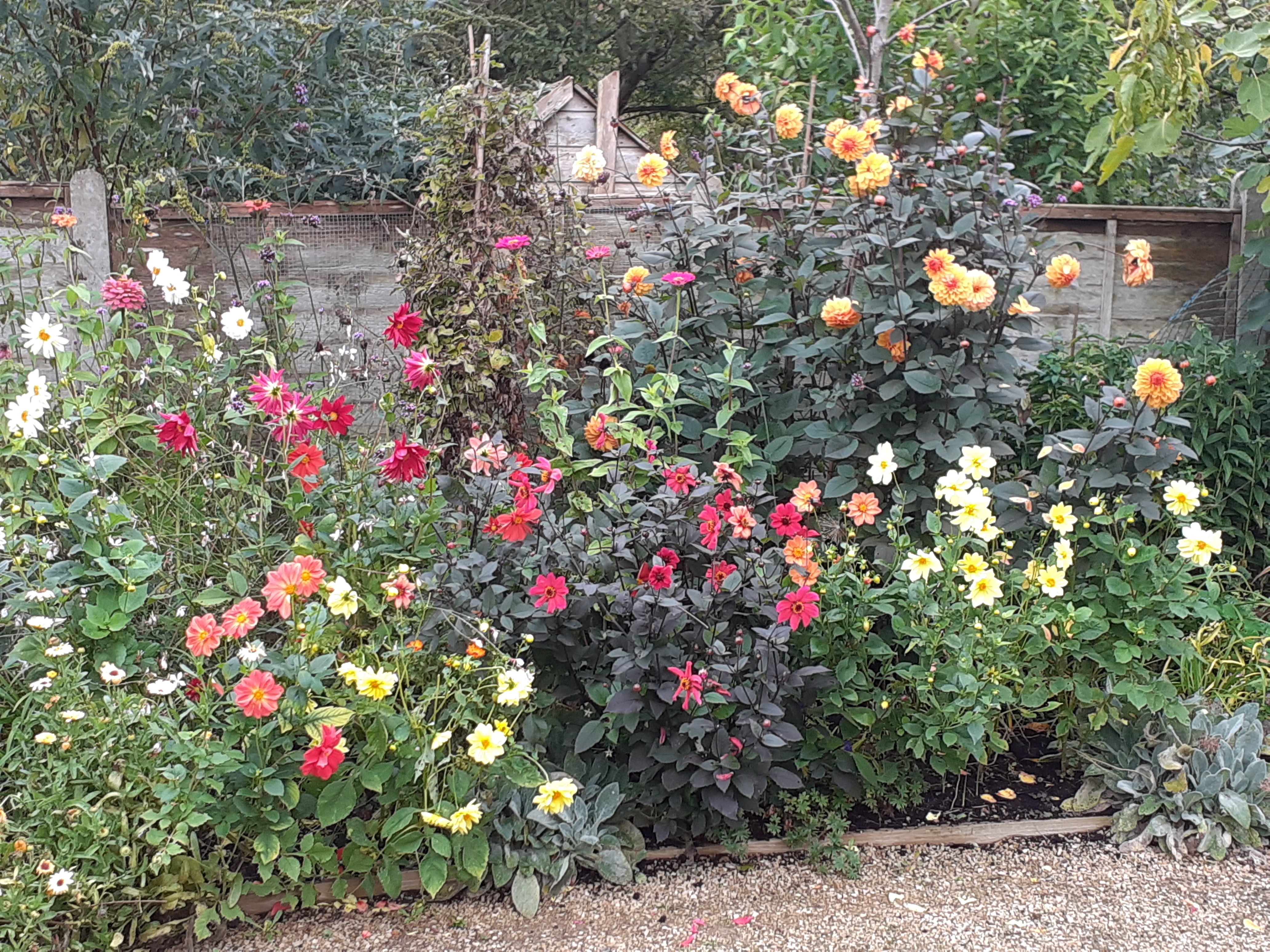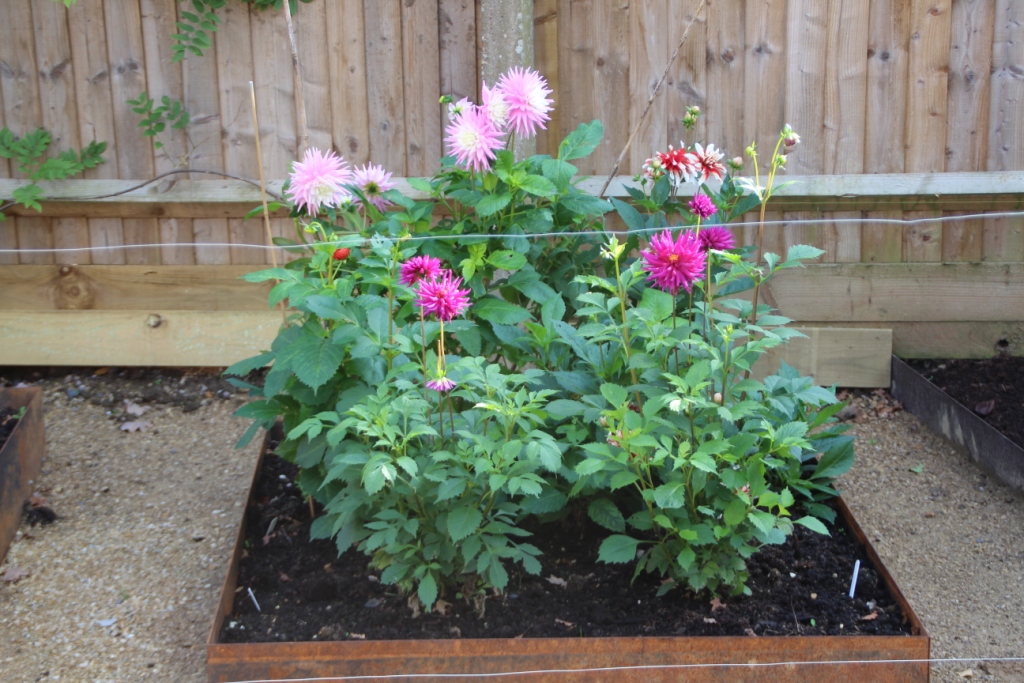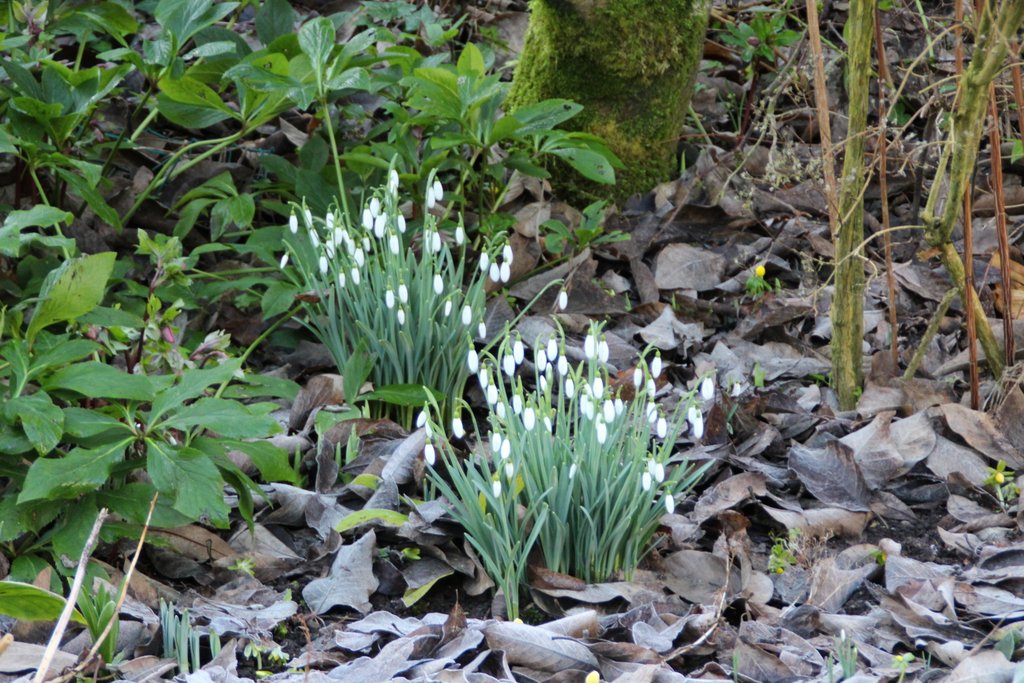Well done to everyone who entered the village show last month, the hall looked splendid. Hopefully, everyone (especially first-timers) enjoyed themselves and got a certificate or two to reward their efforts. We certainly met some people who were having a first go and had surprised themselves with how well they’d done.
Now it is back to general garden care. October marks the change from late summer to early autumn. While there may be glorious days, we will start to get much colder nights and could see the first frosts.
Until the frosts arrive, flowers like Dahlias, Echinacea, Rudbeckia and Gaillardia will all continue flowering. Keep dead-heading to prolong the welcome colour they provide. Similarly, roses might still be flowering, but reduce the height by about a third so that they won’t rock in the autumn winds and disturb the roots. If you have had any blackspot, make sure that you clear away all the foliage and dispose of it (not to compost) so that spores cannot over-winter.
Once we’ve had the first frost, then the foliage of Dahlias will die back almost immediately and you can then cut back the top growth and either lift or leave the tubers as you prefer. Classically, Dahlia tubers were lifted and stored over the winter, but in our area they have a pretty good survival rate if left in the ground. The tubers won’t tolerate prolonged wet and cold, so if your garden is likely to have these conditions, then best to lift.
Grass growth slows down as the temperature drops. Even if you don’t want to treat your lawns with a fertiliser/weed killer, it’s a good time to scarify and aerate. This will allow both air and light to reach the base of the plants. For small areas a lawn rake and a bit of effort will give good results, but for larger lawns it is worth trying a machine. Scarifiers can be hired for about £40 per day.
Finally, start looking forward to next year by planting spring flowering bulbs. The earlier you get them in the ground, the more their roots will develop this year, leading to better displays come the spring. Hold off planting tulips until November to reduce the risk of tulip fire.



